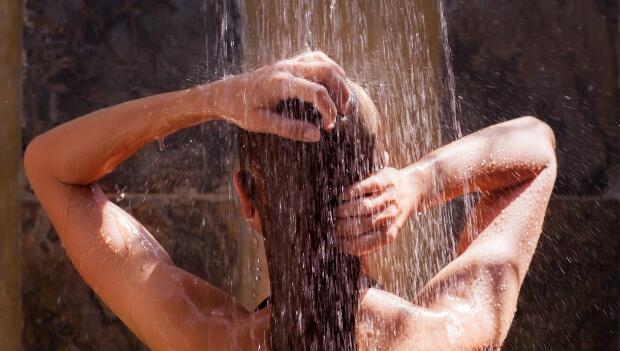
Recovery after a marathon is not only one of the most important aspects of running a marathon, but it's also unfortunately one of the most undervalued. Let's be honest—once you've finished the marathon, you just want to be done. You don't want to think about what you need to do to reset your body so that you can resume training.
Yet that's the problem: If you resume your training post-marathon with structural, fascial and metabolic issues, you're setting yourself up for problems in the coming months. So let's take the question, "What does marathon recovery look like?" one item at a time.
Marathon Recovery Rule 1: Take a Shower
Immediately after the race you should forget the fact that you're an environmentalist and use some extra tap water for a contrast shower. What is a contrast shower? Alternate between cold water and hot water on your legs—one minute hot, then one minute cold. The cold water causes vasoconstriction (i.e. blood vessels close and get smaller) of the blood vessels in your legs, while the hot water causes vasodilation (i.e. blood vessels open and get bigger). This oscillation between the vessels closing and opening helps rush oxygen-rich blood to your legs.
After the marathon, your legs are full of muscles which, on the cellar level, are damaged and have millions of micro-tears. Should you feel guilty about wasting this water? Probably. But it works. As the G.I. Joe cartoons said in the 1980s, "Knowing is half the battle." It's up to you to decide if you want to do this. It's worth noting that there is some fabulous information on the Web from Steve Magness, one of the brightest running coaches in America, that discourages icing after hard workouts. He argues it may inhibit the body's signals for greater adaptation. But, when you've just run a marathon, you need to do all you can to help aid the repair of damaged muscle tissue.
More: Physiology, Running and Recovery
Marathon Recovery Rule 2: Eat Protein, Sleep, Then Get Moving
After your contrast shower, have a nice protein-rich meal. Then, get a good night's sleep. The next day, you take the day off from running, right? Wrong. You've got to get moving the day after the marathon. I know it's hard, but you need to go for at least a brisk walk, and possibly a light jog. Do something to get blood moving in your legs to help facilitate the healing process.
More: Optimal Post-Marathon Recovery Nutrition
This run or walk is your check-in with your body post-race. Is your left knee sore and your right gluteal muscles tight? Or maybe you have horrible blisters on one foot but not the others. You need to gather this information so that you can take it to your therapist or coach to figure out what you can do in the future to minimize these issues that may have held you back some during the race.



